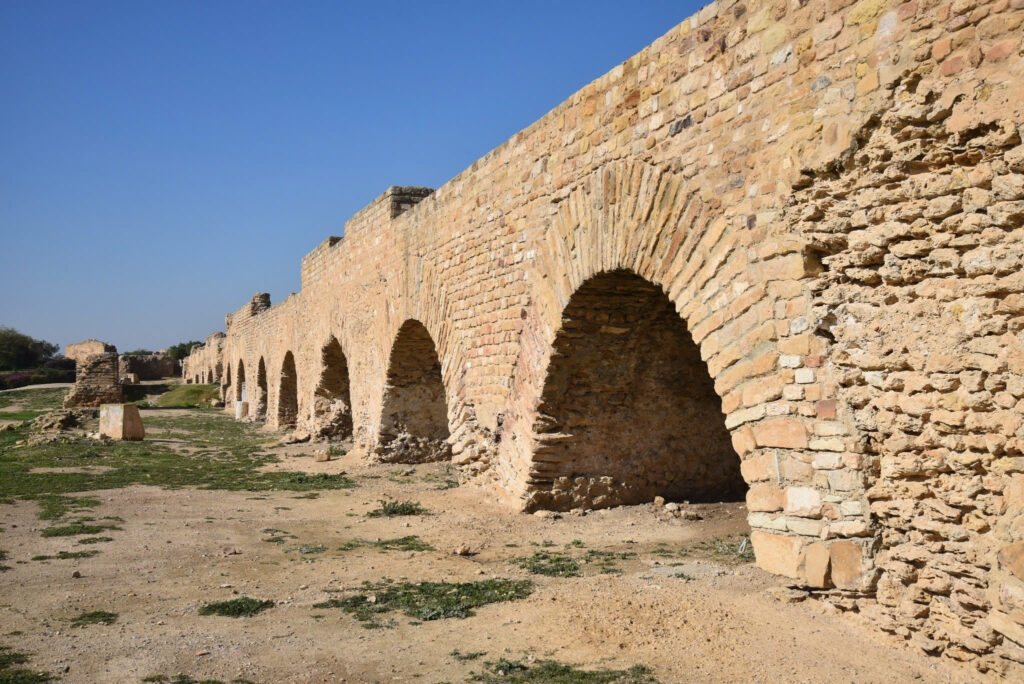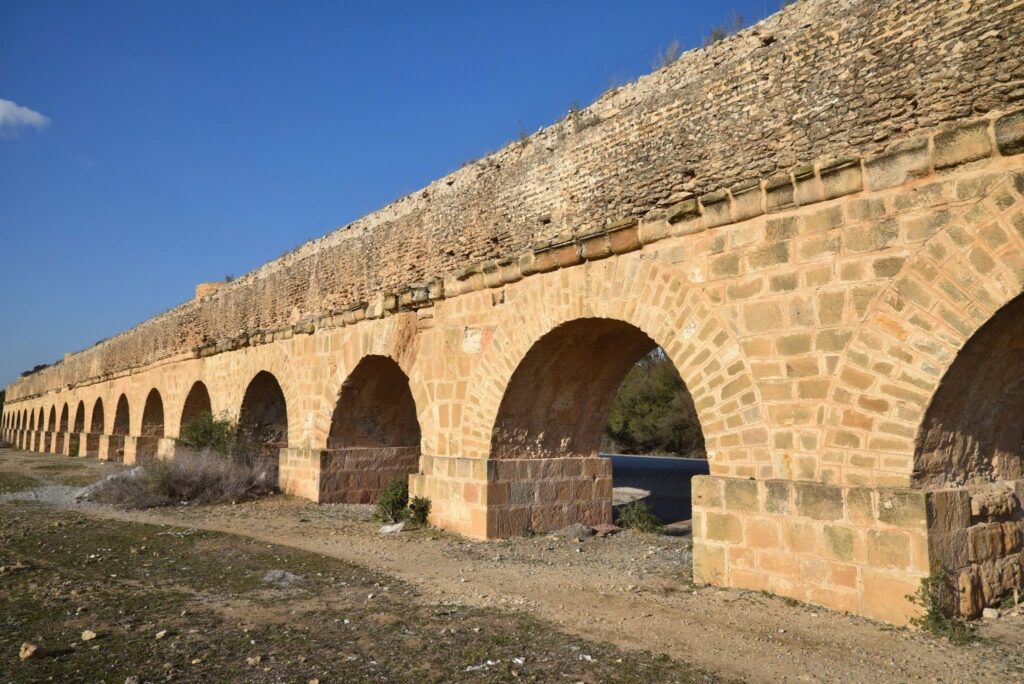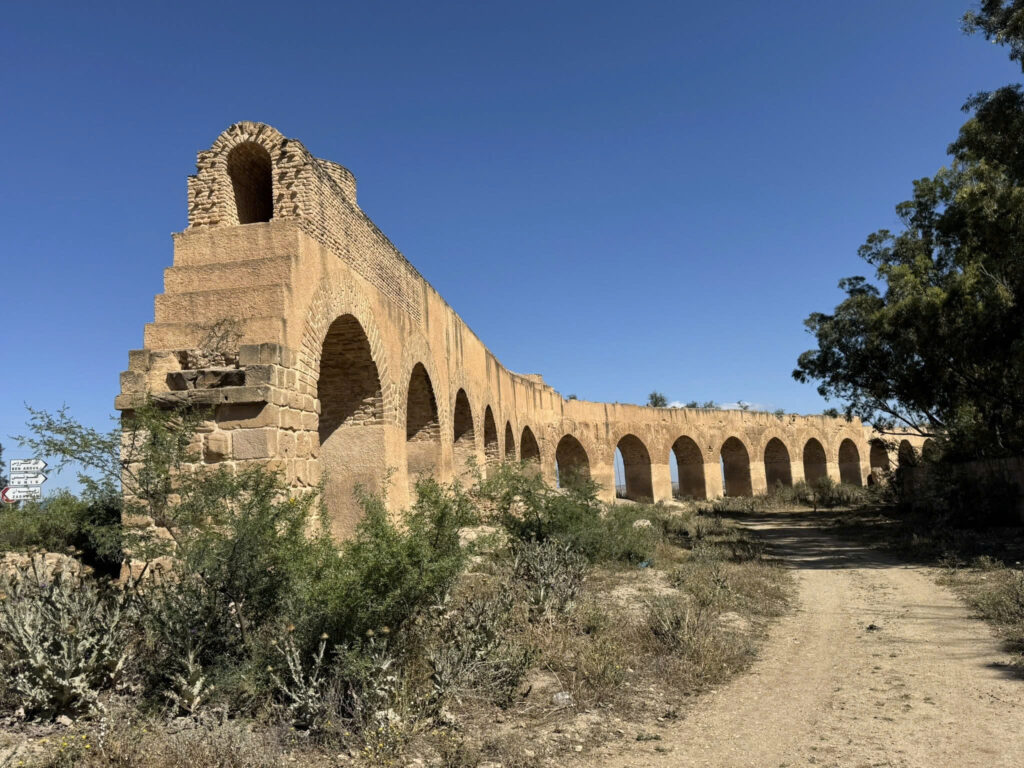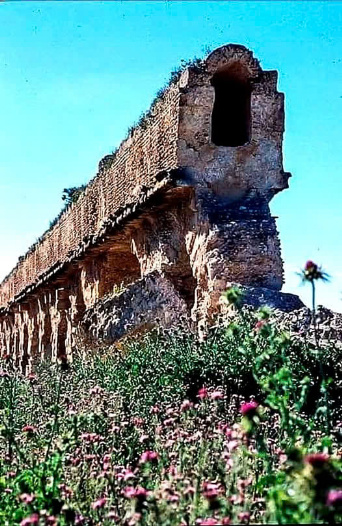Introduction
Nearly two thousand years ago, during the height of the Roman Empire in the 2nd century CE, the Romans embarked on an ambitious mission to overcome the challenges of nature and deliver fresh spring water to the bustling city of Carthage. Stretching over 130 kilometers, the Aqueduct of Carthage stands as a testament to the ingenuity and engineering prowess of the Roman Empire. Despite the passage of time, its remnants continue to inspire awe and admiration, serving as a reminder that the greatness of an empire is measured not only by its conquests but also by its enduring contributions to civilization.

A Bold Mission: Bringing Water Across North Africa
The Challenge of the Terrain
The construction of the Aqueduct of Carthage began in the early 2nd century CE, under the reign of Emperor Hadrian (117–138 CE), and was completed during the Antonine dynasty. The Romans faced a formidable challenge: transporting water over 60 kilometers of rugged North African terrain.
The journey began at the Zaghouan spring, nestled in the mountains, and ended in the heart of Carthage, a city that had been rebuilt following its destruction by Rome in 146 BCE during the Third Punic War. By the time the aqueduct was completed, Carthage had grown into a thriving metropolis, becoming one of the most important cities in the Roman Empire.

Without modern machinery, the aqueduct relied solely on gravity and innovative engineering to guide the water. The Romans carefully calculated gradients and constructed a network of tunnels, conduits, and arches to maintain a steady flow across hills and valleys under the scorching African sun.
The Aqueduct of Carthage: A Masterpiece of Design
Impeccable Craftsmanship
The aqueduct’s design was a marvel of precision and durability. Built during the 2nd century CE, it wound through hidden tunnels, spanned vast distances with elegant stone arches, and endured the test of time thanks to the Romans’ impeccable craftsmanship. Every stone was carefully placed, and the structure was engineered to maximize efficiency without the need for pumps or advanced technology.
A Lifeline for a Thriving City

The aqueduct wasn’t just an architectural wonder; it was the lifeline of Carthage. It provided water to the city’s fountains, ensuring a steady supply for daily life, and powered the colossal Baths of Antoninus, built around 145 CE during the reign of Emperor Antoninus Pius (138–161 CE).
These baths, the largest in Africa and one of the largest in the Roman Empire, were more than just places for hygiene—they were centers of luxury, social interaction, and public life, symbolizing the prosperity and sophistication of Roman Carthage.
Video
Scars of Time: From Grandeur to Ruins
Impact of Wars and Natural Disasters

Over centuries, the aqueduct suffered from the ravages of wars, earthquakes, and the slow decay of time. The Vandal invasion of North Africa in the 5th century CE and later the Arab conquest in the 7th century CE further contributed to its decline.
Yet, fragments of this monumental structure still stand today, scattered across the landscape as silent witnesses to the Roman Empire’s engineering brilliance.
A Legacy of Greatness
Though it’s stones bear the scars of history, the aqueduct’s legacy endures. It reminds us that the true greatness of an empire lies not just in its military might but in the enduring infrastructure it builds for the well-being of its people.
Conclusion

The Aqueduct of Carthage, constructed primarily in the 2nd century CE, is more than an ancient engineering marvel—it is a symbol of Roman ingenuity, vision, and dedication to improving the lives of their citizens. From the Zaghouan spring to the bustling streets of Carthage, this aqueduct brought life to a city and left an indelible mark on history.
Today, its remains inspire us to reflect on the ingenuity of the past and the enduring power of human innovation.

